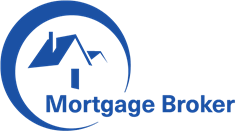What Are the Different Kinds of Loans?
A loan is an agreement between a lender and a borrower to advance a sum of money in exchange for repayment of the principal amount plus interest. The loan may be for a specific, one-time amount or it may be available as an open-ended line of credit up to a specified limit.
A loan typically entails a monthly payment until it is paid in full. The monthly payments are meant to pay off the loan principal, plus interest and other fees charged by the lender. The monthly payments will be based on the interest rate and the loan term, which is the length of time the borrower has to repay the loan.
There are many different kinds of loans and they all have their own unique features. Understanding the differences between them will help you choose the best loan for your needs and financial goals.
Loans come in several forms including unsecured, secured, and personal loans. They often require collateral, such as a home or car. The asset serves as security in case the borrower defaults on their loan.
Unsecured loans usually have higher interest rates than secured loans because they are considered riskier to lenders. They also require collateral to protect the lender in case the borrower doesn’t make their payments.
In order to qualify for a loan, the applicant will need to have a good credit score and history of making payments on time. Having good credit can increase the chance of getting a loan with favorable terms and conditions.
The applicant should also evaluate their income to see if they will be able to make the monthly payments on time. This will involve submitting pay stubs, W-2 forms and salary letters. If the applicant is self-employed, they will need to provide tax returns for two or more years and invoices where applicable.
A mortgage is a type of loan that is specifically tied to real estate property, such as a house or land. This is because the borrower will own the property in exchange for paying a fixed interest rate over a period of years.
Another type of loan is a revolving line of credit (or HELOC). This type of loan allows borrowers to access their available funds as needed, and they can borrow again and again against that line of credit as long as they stay within their approved credit limit.
Using a revolving line of credit can be an important part of managing a healthy budget. It helps you control your spending while keeping a track of your debt level so you can avoid incurring more debt in the future.
Revolving lines of credit are not only helpful for consumers who want to keep their debt at a manageable level, but they can also be useful for companies that need quick access to capital. In addition to allowing businesses to pay for seasonal expenses or finance growth, revolving credit can also help companies save money on interest.
